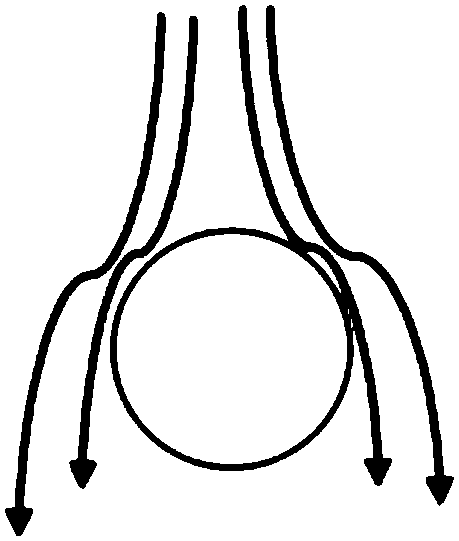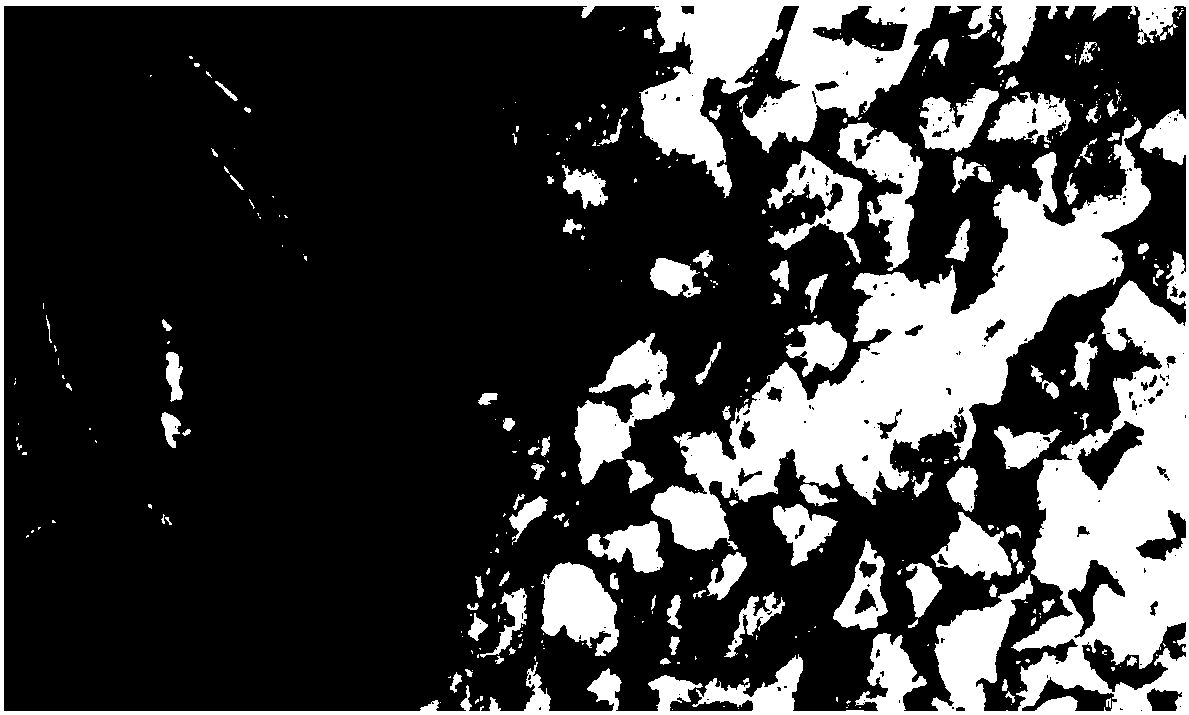Iron ore sintering method by using light-burnt magnesium ball
A sintering method, a technology of lightly burned magnesium, applied in the field of iron ore sintering, can solve problems such as high price, increased fuel consumption and emissions, and dust pollution, and achieve the effect of improving sintering utilization coefficient and optimizing production technical indicators
- Summary
- Abstract
- Description
- Claims
- Application Information
AI Technical Summary
Problems solved by technology
Method used
Image
Examples
Embodiment 1
[0056] The raw materials of this embodiment are shown in Table 2. Lightly burned magnesia balls 1 are prepared in proportion to iron ore powder, returned ore, coke powder, quicklime, and limestone powder, and then mixed with water, granulated, distributed, ignited, sintered, Cooling and crushing to obtain finished sintered ore, the specific operation steps are as follows:
[0057] Lightly burned magnesia balls with a particle size of 5-20mm, iron ore powder with a particle size of 0-8mm, returned ore with a particle size of 0-5mm, coke powder with a particle size of 0-3mm, quicklime with a particle size of 0-3mm and 0~3 Limestone powders are mixed according to the above ratio, then add 7.5% water to mix evenly, and the mixing time is 2 minutes; the mixed materials are granulated, and the granulation time is 5 minutes, and the prepared granules are placed in the After sintering the cup with a diameter of 300mm, it will be formed as figure 1 For the mosaic structure shown, the...
Embodiment 2
[0069] The batching structure shown in Table 2 was adopted, and the experimental procedure was referred to Example 1. The most significant difference between Example 2 and the benchmark test is that 1.5% light burnt magnesium ball 1 is used to replace dolomite to provide MgO, the iron grade and binary basicity of the sintered ore are basically unchanged, and the MgO content is increased from 1.44% to 1.70 %. The utilization coefficient of sintering is changed from 1.67t / m 2 *h increased to 1.76t / m 2 *h, that is, the increase in output reaches 5.4%. It can be seen that the block-shaped high-temperature-resistant light-burned magnesium balls in the sintered material layer do play a role in improving the air permeability of the material layer, so the vertical sintering speed and utilization factor are both increased. The drum index decreased slightly, the yield increased, the solid fuel consumption decreased, and the maximum waste gas temperature of sintering increased from 50...
Embodiment 3
[0071]The batching structure shown in Table 2 was adopted, and the experimental procedure was referred to Example 1. In Example 3, the proportion of light-burned magnesium ball 1 was increased to 2.2%, the binary basicity of sintered ore remained unchanged, the iron grade decreased slightly, and the MgO content increased from 1.44% to 2.20%. The utilization coefficient of sintering is changed from 1.67t / m 2 *h increased to 1.75t / m 2 *h, the yield increased by 4.8%. The drum index decreased slightly, the yield increased slightly, the solid fuel consumption decreased, and the maximum waste gas temperature of sintering increased from 509.6°C to 552.3°C.
PUM
| Property | Measurement | Unit |
|---|---|---|
| particle size | aaaaa | aaaaa |
| particle size | aaaaa | aaaaa |
| particle size | aaaaa | aaaaa |
Abstract
Description
Claims
Application Information
 Login to View More
Login to View More - R&D Engineer
- R&D Manager
- IP Professional
- Industry Leading Data Capabilities
- Powerful AI technology
- Patent DNA Extraction
Browse by: Latest US Patents, China's latest patents, Technical Efficacy Thesaurus, Application Domain, Technology Topic, Popular Technical Reports.
© 2024 PatSnap. All rights reserved.Legal|Privacy policy|Modern Slavery Act Transparency Statement|Sitemap|About US| Contact US: help@patsnap.com










